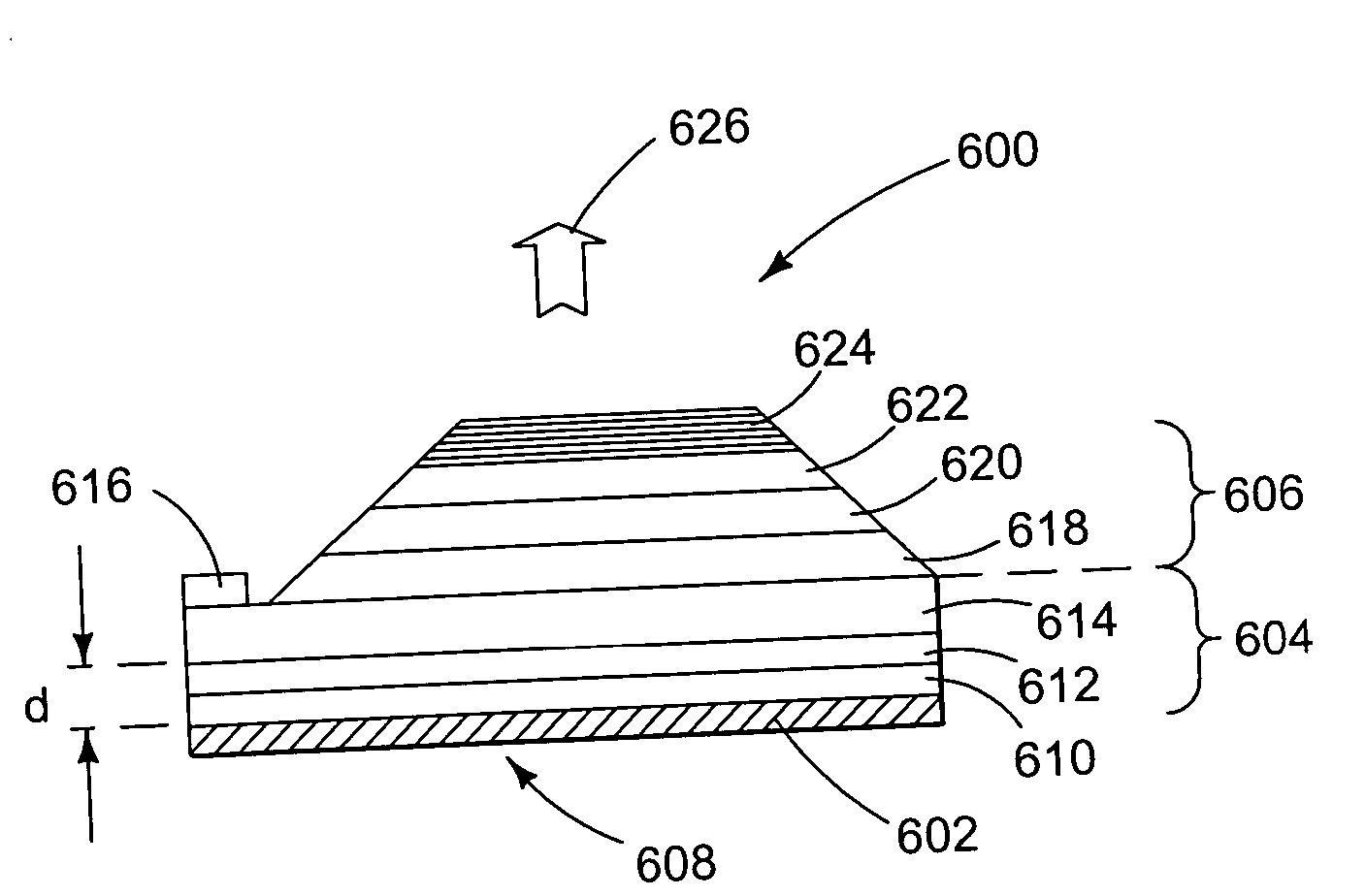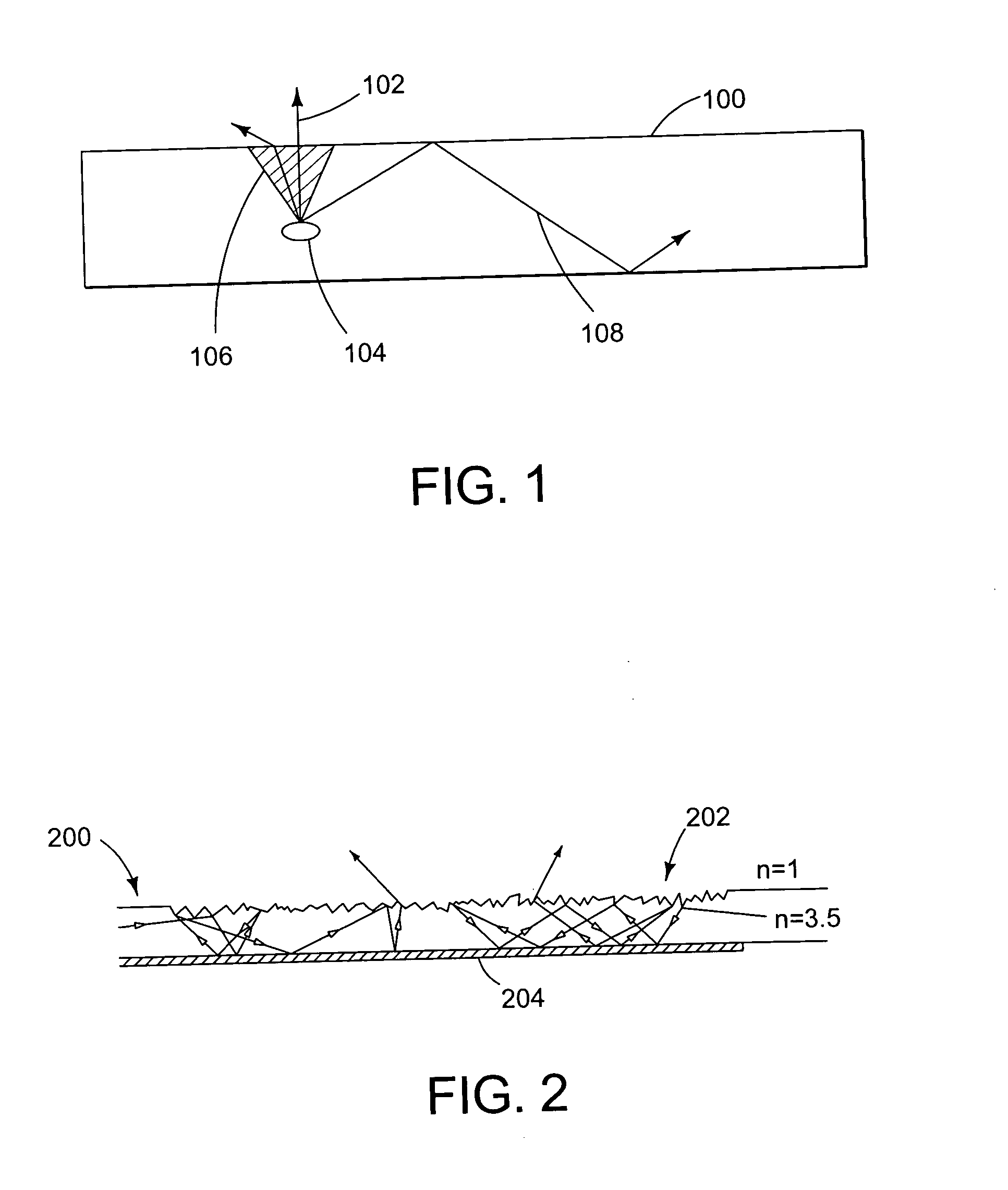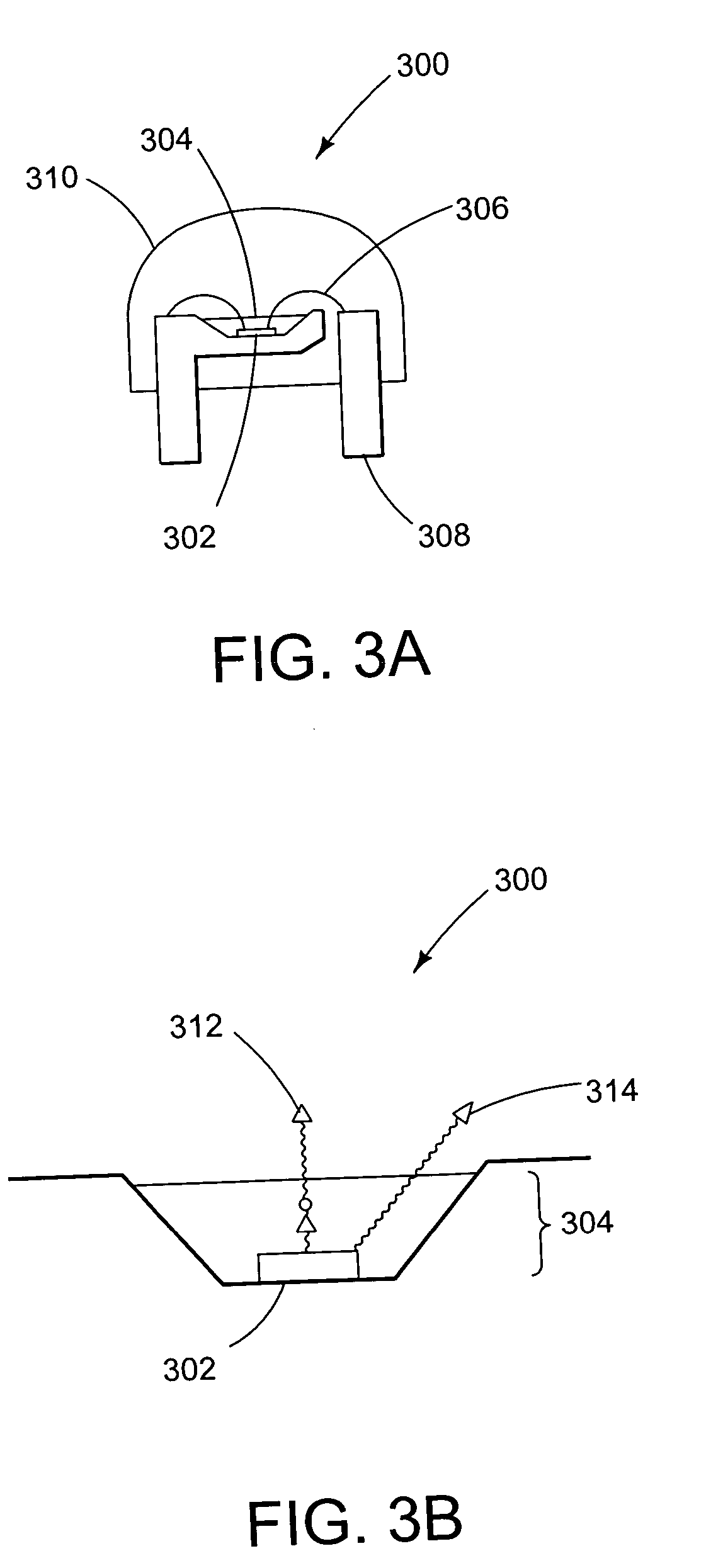White, single or multi-color light emitting diodes by recycling guided modes
a light-emitting diode and guided mode technology, applied in the field of light-emitting diodes, can solve the problems of affecting the efficiency of the led, and affecting the color balance of the led,
- Summary
- Abstract
- Description
- Claims
- Application Information
AI Technical Summary
Benefits of technology
Problems solved by technology
Method used
Image
Examples
Embodiment Construction
[0045] In the following description of the preferred embodiment, reference is made to the accompanying drawings which form a part hereof, and in which is shown by way of illustration a specific embodiment in which the invention may be practiced. It is to be understood that other embodiments may be utilized and structural changes may be made without departing from the scope of the present invention.
[0046] Overview
[0047] The present invention describes new LED structures that provide white, single or multi-color light and increased light extraction efficiency while retaining a planar structure. The new LED structures have direct emission outside the structure and, in addition, convert guided light in different colors through absorption and re-emission by additional emitting species, to achieve a high-efficiency white, single or multi-color LED.
[0048] The structure includes a bottom mirror, one or more current-injected layers, one or more electrically-passive, optically-pumped layer...
PUM
 Login to View More
Login to View More Abstract
Description
Claims
Application Information
 Login to View More
Login to View More - R&D
- Intellectual Property
- Life Sciences
- Materials
- Tech Scout
- Unparalleled Data Quality
- Higher Quality Content
- 60% Fewer Hallucinations
Browse by: Latest US Patents, China's latest patents, Technical Efficacy Thesaurus, Application Domain, Technology Topic, Popular Technical Reports.
© 2025 PatSnap. All rights reserved.Legal|Privacy policy|Modern Slavery Act Transparency Statement|Sitemap|About US| Contact US: help@patsnap.com



